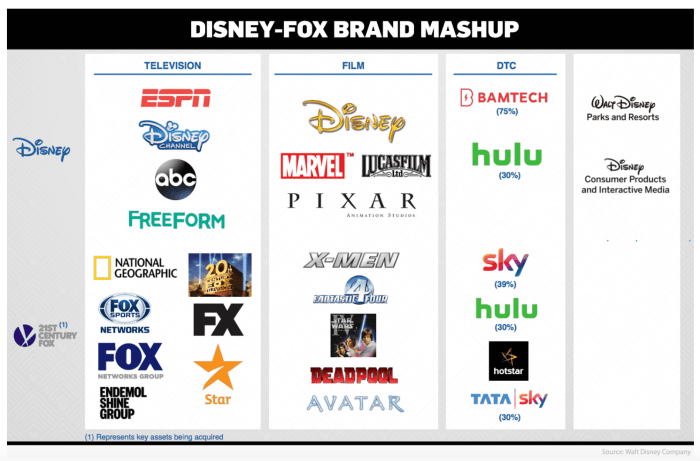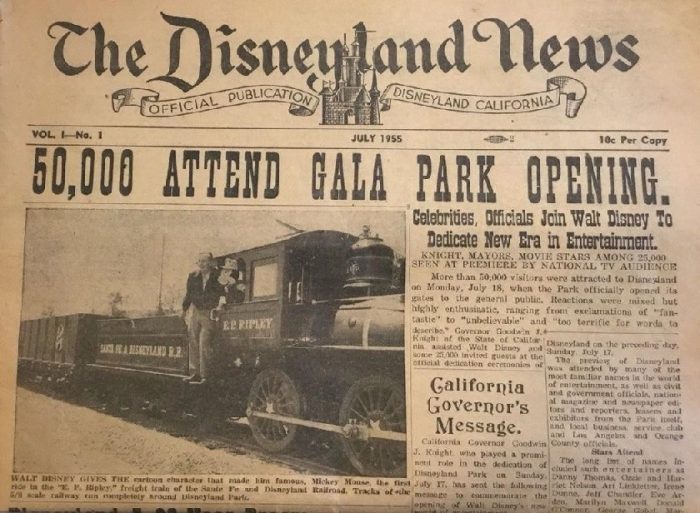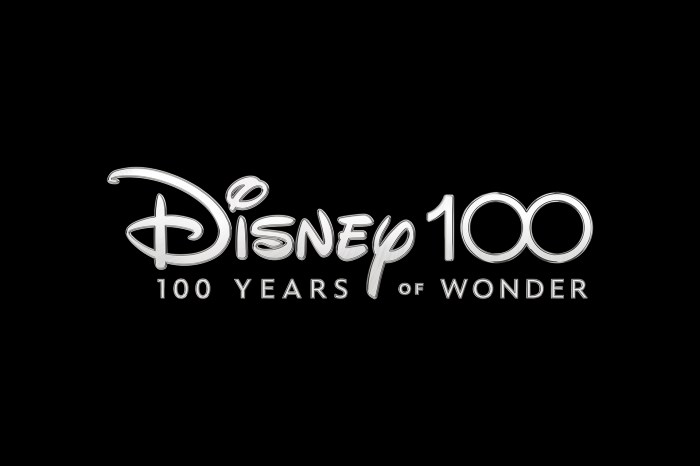The Walt Disney Company, a name synonymous with childhood memories, cinematic masterpieces, and global entertainment dominance, has left an indelible mark on the world. From its humble beginnings as a small animation studio to its current status as a global entertainment conglomerate, Disney’s journey is a captivating tale of innovation, creativity, and unwavering commitment to its audience.
Over the decades, Disney has evolved and expanded its reach, encompassing a vast array of business segments, from theme parks and resorts to television networks and streaming services. Its iconic characters, such as Mickey Mouse and Snow White, have become cultural touchstones, transcending generations and borders.
Historical Overview of The Walt Disney Company
The Walt Disney Company, a global entertainment behemoth, has left an indelible mark on the world of animation, theme parks, and media. Its humble beginnings as a small animation studio in 1923, founded by Walt Disney and Roy Disney, laid the foundation for a century of storytelling magic.Walt
Disney’s unwavering passion for animation and storytelling propelled the company to create groundbreaking animated films like “Snow White and the Seven Dwarfs” and “Fantasia.” These early successes established Disney as a leader in the industry, captivating audiences with vibrant characters and enchanting narratives.
Key Figures
Walt Disney, the visionary artist and animator, was the driving force behind the company’s early success. His innovative ideas and unwavering determination shaped Disney’s identity as a storyteller. Roy Disney, his brother and business partner, provided the financial acumen and strategic leadership that complemented Walt’s creative genius.
Together, they navigated the challenges of the early years, laying the groundwork for the company’s future growth.
Evolution into a Global Conglomerate
From its humble beginnings as an animation studio, The Walt Disney Company has evolved into a multifaceted entertainment conglomerate. Over the decades, it has expanded into film production, television broadcasting, theme parks, merchandising, and streaming services. Today, Disney’s reach extends across the globe, touching the lives of countless people with its beloved characters, captivating stories, and immersive experiences.
Core Business Segments
The Walt Disney Company operates through several distinct business segments, each contributing to the company’s overall success and revenue generation.
Studio Entertainment
The Studio Entertainment segment encompasses the production and distribution of films, television shows, and other entertainment content. It includes iconic film studios such as Walt Disney Pictures, Pixar, Marvel Studios, and Lucasfilm. This segment generates a significant portion of Disney’s revenue through box office earnings, home video sales, and streaming subscriptions.
Financial Performance
The Walt Disney Company has consistently delivered strong financial performance over the past few years. In 2022, the company reported revenue of $82.7 billion, a 13% increase from the previous year. Net income for the year was $12.6 billion, up 25% from 2021. These results were driven by strong growth across all of Disney’s business segments, including theme parks, media networks, and studio entertainment.
Revenue
Disney’s revenue growth has been driven by a number of factors, including increased attendance at its theme parks, higher advertising revenue from its media networks, and the success of its film and television releases. In 2022, the company’s theme parks generated revenue of $28.7 billion, a 28% increase from the previous year.
This growth was driven by higher ticket prices, increased attendance, and the opening of new attractions at its parks around the world.
Profitability
Disney’s profitability has also improved in recent years. The company’s net income margin has increased from 13.3% in 2021 to 15.2% in 2022. This improvement was driven by cost-cutting measures, as well as the strong growth in revenue.
Expenses
Disney’s expenses have also increased in recent years, but at a slower pace than revenue. In 2022, the company’s total expenses were $70.1 billion, up 11% from the previous year. This increase was driven by higher programming costs for its media networks, as well as increased marketing and promotion expenses for its film and television releases.
Comparison to Competitors
Disney’s financial performance compares favorably to its competitors. In 2022, Disney’s revenue was more than double that of its closest competitor, Comcast. Disney’s net income was also significantly higher than Comcast’s.
Key Acquisitions and Mergers

The Walt Disney Company has grown significantly through a series of strategic acquisitions and mergers. These acquisitions have allowed Disney to expand its portfolio of entertainment properties, increase its reach, and strengthen its position in the global entertainment industry.
One of the most significant acquisitions in Disney’s history was the purchase of Pixar Animation Studios in 2006. Pixar was known for its groundbreaking computer-animated films, such as “Toy Story” and “Finding Nemo.” The acquisition brought some of the most talented animators and filmmakers in the industry to Disney and helped to solidify Disney’s position as a leader in animation.
Another major acquisition was the purchase of Marvel Entertainment in 2009. Marvel is a leading publisher of comic books and graphic novels, with iconic characters such as Spider-Man, Iron Man, and Captain America. The acquisition gave Disney access to a vast library of intellectual property and has helped to fuel the success of the Marvel Cinematic Universe.
In 2012, Disney acquired Lucasfilm, the production company founded by George Lucas. Lucasfilm is known for the “Star Wars” and “Indiana Jones” franchises. The acquisition gave Disney control of some of the most popular and enduring franchises in film history.
These acquisitions have been instrumental in Disney’s growth and expansion. They have allowed Disney to diversify its portfolio, increase its reach, and create new opportunities for growth. Disney is well-positioned to continue to grow and expand in the future, thanks to its strong portfolio of entertainment properties and its commitment to innovation.
Impact of Acquisitions
- Expanded Disney’s portfolio of entertainment properties, including films, television shows, theme parks, and consumer products.
- Increased Disney’s reach by giving it access to new markets and demographics.
- Strengthened Disney’s position in the global entertainment industry by creating a more diversified and powerful company.
Global Presence
The Walt Disney Company has a vast global presence, with operations in over 190 countries and territories around the world. The company’s theme parks, resorts, and other entertainment offerings are enjoyed by millions of people each year, and its media content is translated into over 50 languages.Disney
has been able to successfully adapt its products and services to different cultures and markets by understanding the local customs and traditions of each region. For example, in China, Disney has partnered with local companies to create theme parks that are tailored to the Chinese market.
In India, Disney has launched a number of initiatives to promote its products and services to the country’s growing middle class.
Theme Parks and Resorts
Disney’s theme parks and resorts are a major part of the company’s global business. The company operates 12 theme parks around the world, including Disneyland in California, Walt Disney World in Florida, and Tokyo Disney Resort in Japan. Disney also operates a number of resorts and other entertainment venues, such as Disney Cruise Line and Disney Vacation Club.
Media and Entertainment
Disney’s media and entertainment division is responsible for the company’s film, television, and music businesses. The company’s film studio, Walt Disney Pictures, is one of the most successful in the world, and has produced some of the most iconic films of all time, such as “Snow White and the Seven Dwarfs” and “The Lion King.”
Disney also owns a number of television networks, including ABC, ESPN, and Disney Channel.
Consumer Products
Disney’s consumer products division is responsible for the company’s licensing and merchandising business. The company licenses its characters and brands to a wide range of manufacturers, who produce a variety of products, such as toys, clothing, and home goods. Disney also operates a number of retail stores around the world, where it sells its own products and merchandise from other companies.
Impact on Popular Culture
The Walt Disney Company has left an indelible mark on popular culture, creating a vast and enduring legacy that continues to shape the entertainment landscape. From iconic characters to beloved films and immersive theme parks, Disney has woven itself into the fabric of our collective imagination.
Iconic Characters
Disney has introduced a pantheon of characters that have become cultural touchstones. Mickey Mouse, the cheerful and optimistic mouse, has become an enduring symbol of the company and a beloved figure worldwide. Other beloved characters include Snow White, Cinderella, Peter Pan, and Elsa from “Frozen,” each with their own unique stories and personalities that have resonated with generations of fans.
Memorable Films
Disney’s animated films have captured the hearts of audiences for decades. From the groundbreaking “Snow White and the Seven Dwarfs” in 1937 to the modern-day masterpieces like “Moana” and “Encanto,” Disney’s films have showcased stunning animation, memorable songs, and heartwarming stories that have left a lasting impact on popular culture.
Immersive Theme Parks
Disney’s theme parks offer unparalleled immersive experiences that transport guests to worlds of imagination and adventure. Disneyland in California, opened in 1955, has become a beloved destination for families and a model for theme parks around the world. With attractions inspired by Disney’s films, characters, and stories, these parks have become iconic landmarks and cultural destinations.
Innovation and Technology

The Walt Disney Company has always been at the forefront of innovation and technology, from its early days of pioneering animation to its current use of cutting-edge technology to create immersive experiences. The company’s commitment to innovation has been a key driver of its success, and it continues to invest heavily in research and development to stay ahead of the curve.
In recent years, The Walt Disney Company has implemented a number of technological advancements that have enhanced the customer experience. These include the use of augmented reality (AR) and virtual reality (VR) to create immersive experiences in its theme parks and resorts, the development of personalized content recommendations on its streaming services, and the use of artificial intelligence (AI) to improve customer service.
Immersive Experiences
The Walt Disney Company has been a pioneer in the use of AR and VR to create immersive experiences for its guests. In its theme parks, AR and VR are used to create interactive games, educational experiences, and virtual meet-and-greets with Disney characters.
At its resorts, AR and VR are used to create immersive dining experiences and virtual tours of the property.
Social Responsibility
The Walt Disney Company has a long-standing commitment to social responsibility. The company’s initiatives focus on environmental sustainability, social equity, and community engagement.Disney’s environmental goals include reducing its carbon footprint, conserving water, and protecting wildlife. The company has set a goal of becoming carbon neutral by 2030 and has already made significant progress towards this goal.
Disney has also invested in renewable energy projects and has worked to reduce its water consumption by more than 10% since 2012.In terms of social equity, Disney is committed to promoting diversity and inclusion in its workforce and in its content.
The company has set a goal of increasing the representation of women and minorities in its leadership roles by 50% by 2025. Disney also supports a number of organizations that work to promote social justice and equality.Disney’s community engagement efforts focus on supporting children and families.
The company has donated more than $1 billion to charities since 2012, and it has also created a number of programs to help children in need. For example, the Disney VoluntEARS program provides opportunities for Disney employees to volunteer their time to local organizations.
SWOT Analysis
The Walt Disney Company’s success is attributed to its strengths in brand recognition, diversified businesses, and global presence. However, it also faces challenges in competition, technological disruption, and changing consumer preferences.
Strengths
- Strong Brand Recognition: Disney is one of the most recognizable brands globally, with a loyal customer base and a reputation for quality entertainment.
- Diversified Businesses: Disney operates across multiple segments, including theme parks, film and television production, consumer products, and media networks, providing revenue stability and growth opportunities.
- Global Presence: Disney has a vast global footprint with theme parks, resorts, and distribution channels worldwide, allowing it to reach a wide audience.
Weaknesses
- High Operating Costs: Disney’s theme parks and film production require significant capital investments and ongoing expenses, which can impact profitability.
- Reliance on Intellectual Property: Disney’s success is heavily dependent on its iconic characters and franchises, which can limit innovation and pose risks if they lose popularity.
- Competition: Disney faces intense competition from other entertainment giants, such as Netflix, Amazon, and Universal, who are investing heavily in content and streaming services.
Opportunities
- Expansion into New Markets: Disney has opportunities to expand its presence in emerging markets, particularly in Asia and Latin America, where entertainment demand is growing.
- Mergers and Acquisitions: Disney can acquire other companies to strengthen its portfolio and gain access to new technologies or content.
- Technological Advancements: Disney can leverage technological advancements to enhance its theme park experiences, create immersive content, and personalize its offerings.
Threats
- Technological Disruption: Streaming services and virtual reality could disrupt traditional entertainment models, posing a threat to Disney’s core businesses.
- Changing Consumer Preferences: Disney needs to adapt to changing consumer preferences, such as the shift towards streaming and shorter attention spans.
- Regulatory Challenges: Disney may face regulatory scrutiny and potential antitrust actions due to its dominant position in the entertainment industry.
To address its challenges and capitalize on its opportunities, Disney can focus on strategies such as:
- Investing in technology and innovation to enhance its products and services.
- Expanding its global reach and acquiring new content to diversify its offerings.
- Partnering with other companies to gain access to new technologies and markets.
Future Outlook
The Walt Disney Company stands poised to continue its reign as a global entertainment powerhouse. With its diverse portfolio of assets, innovative spirit, and unwavering commitment to storytelling, the company is well-positioned to navigate the evolving landscape of entertainment.One key growth area for Disney lies in the realm of streaming.
The company’s streaming services, Disney+, Hulu, and ESPN+, have amassed a vast and loyal subscriber base. As the streaming market continues to expand, Disney is well-placed to capitalize on this growth by offering a compelling lineup of exclusive content, including new releases, original series, and classic favorites.
Global Expansion
Disney has a strong track record of global expansion, with operations spanning six continents. The company is expected to continue its international growth strategy, particularly in emerging markets with a growing middle class and a thirst for entertainment. By establishing a presence in these regions, Disney can tap into new markets and increase its revenue streams.
Challenges
While Disney has a bright future ahead, it is not without challenges. One significant hurdle is the rapidly changing media landscape. The rise of new technologies and the fragmentation of the entertainment market pose challenges to Disney’s traditional business models.
The company must adapt to these changes by embracing new platforms and technologies while maintaining its core values and storytelling strengths.
Predictions
Industry analysts predict that The Walt Disney Company will continue to be a dominant force in the entertainment industry. The company’s strong brand recognition, diverse portfolio, and commitment to innovation are expected to drive its future success. Disney is likely to continue its strategic acquisitions and partnerships to expand its reach and enhance its offerings.In
the years to come, Disney is poised to entertain, inspire, and captivate audiences worldwide. As the company continues to evolve and adapt to the ever-changing entertainment landscape, its future remains bright with limitless possibilities.
Last Recap

As the company navigates the ever-changing landscape of the entertainment industry, it continues to invest in innovation and technology, pushing the boundaries of storytelling and customer experience. With a rich history, a diverse portfolio, and a commitment to social responsibility, The Walt Disney Company stands poised to continue its reign as a global entertainment powerhouse for years to come.
Q&A
What is The Walt Disney Company’s mission statement?
To entertain, inform, and inspire people around the globe through the power of unparalleled storytelling and innovative technology.
Who are some of the key figures behind Disney’s success?
Walt Disney, Roy Disney, and Bob Iger have played pivotal roles in shaping the company’s trajectory.
What are some of Disney’s most popular theme parks?
Walt Disney World in Orlando, Disneyland in Anaheim, and Disneyland Paris are among the most visited theme parks worldwide.
How does Disney adapt its products and services to different cultures?
Disney conducts extensive research and collaborates with local partners to ensure that its offerings resonate with audiences around the globe.
What are some of Disney’s recent technological advancements?
The company has invested in augmented reality, virtual reality, and artificial intelligence to enhance the guest experience.

